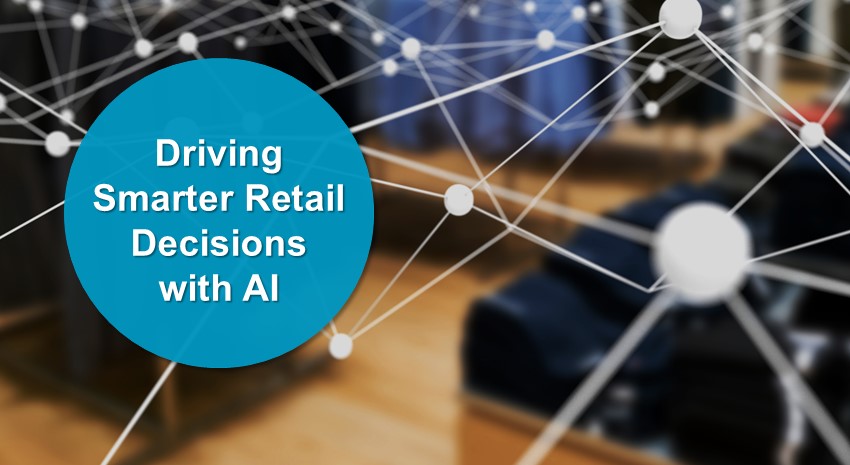How AI Is Powering Smarter Retail Decisions

Across retail, the buzz around artificial intelligence is now translating into concrete tools that let retailers act faster, manage complexity more effectively, and deliver truly personalized customer experiences. To turn that promise into reality, retailers must integrate AI not as a bolt-on, but as the engine powering smarter decisions across operations, merchandising, and engagement.
From data to decisions: The rise of autonomous systems
Traditional ERP platforms have long supported retail operations—inventory, supply chain, finance—but often in a reactive or parameter-based manner. The new wave is autonomous ERP: Systems embedded with AI and machine learning that interpret data, anticipate needs, and even suggest or execute actions without constant human intervention.
By drawing on vast data—from sales history to social trends—autonomous ERPs can detect emerging demand shifts (such as a viral product trending on social media), alert teams to supply chain disruptions before they escalate, or automatically reallocate regional inventory to higher-need stores. Meanwhile, such systems free up staff from tedious workflows (like supplier communications or data cleanup), enabling teams to focus on strategy, not spreadsheets.
In fact, 85% of ERP vendors are now actively incorporating AI features into their products, underscoring how intelligence is becoming a crucial component of enterprise systems.
Personalization, forecasting, and optimization in the AI retail arsenal
AI’s impact in retail isn’t limited to operations. In front-end experiences, it is redefining how consumers discover, choose, and trust brands. A few key domains stand out:
Hyper-personal customer journeys
Retailers are using AI to parse purchase histories, browsing signals, loyalty behaviors, and demographic context to recommend products and content tailored to individuals. The result: stronger engagement, higher conversion, and more loyalty. To illustrate the point, 79% of retail marketers report using AI to personalize content and campaigns.
Demand forecasting and inventory optimization
AI-powered forecasting models go beyond seasonality or historical averages. By ingesting external signals—advertising activity, social media trends, regional indicators, promotions—they produce more agile, accurate demand predictions. For instance, AI-enabled ERPs are cited as tools that help businesses catch a looming stock shortage or proactively rebalance inventory.
Dynamic pricing and promotions
AI models can dynamically adjust pricing or promotional offers based on demand curves, competitive pricing, and customer behavior. Retailers using this approach can stay competitive while protecting margins, especially in fast-moving categories.
Conversational and visual discovery
Chatbots, virtual assistants, and AI-powered search are becoming “front doors” to commerce. These tools not only respond to natural language queries and help customers navigate choices but can also mine user context to suggest relevant products proactively.
Fraud, security, and trust
On the back end, AI helps monitor transaction patterns in real time, flag anomalous behavior, and minimize fraudulent orders. As eCommerce volume grows, leveraging AI for security is becoming a necessity rather than a luxury.
How to weave AI into retail decisions (without disrupting operations)
Embedding AI across retail isn’t just about plugging in tools—it’s a journey. Here are strategic levers to guide the process:
- Start with a strong data foundation. AI insights are only as good as the data they draw on. Retailers must ensure clean, accessible, and well-governed data flows—across POS systems, ERP, loyalty systems, and external sources—so AI models have a holistic view.
- Layer intelligence incrementally. Rather than trying to replace everything at once, begin with “assistive AI” features—recommendations, alerts, forecasting—then grow into autonomous decisioning (where the system suggests or executes actions). This ensures control, trust, and safe adoption.
- Tie AI ROI to business outcomes. Every AI use case should map to a measurable value (for example, reduced stockouts, margin lift, increased conversion). This ensures that the AI journey remains anchored to real business benefit.
- Establish guardrails and ethical oversight. Personalization and automation carry risks: Privacy invasions, algorithmic bias, or opaque decisions. Retailers must build transparency, auditability, and privacy into AI solutions from day one. Consumer trust is fragile; misuse of AI can backfire.
- Embed AI into workflows, not just dashboards. Insights are useful—but only when presented to decision-makers or integrated into operational systems in context. Push AI insights into workflows (e.g., “this store should reorder now”) rather than leaving them isolated in analytics portals.
Real-world impact: AI delivering measurable gains
Generative AI and machine-learning enhancements are already shifting performance metrics in retail.
- In a recent survey, NVIDIA reports that 50% of retail respondents believe generative AI is strategic and will be a differentiator in the market.
- neontri claims that 69% of retailers report that adopting AI has increased their annual revenue, while 72% said AI helped them reduce their operating costs.
- And Capital One Shopping reports that retail chatbots increased sales by 67% and AI personalization increased revenues by 40%.
Challenges and considerations on the path forward
There are several challenges and considerations as retailers adopt AI technology:
- Change management and skills: Retail teams may resist opaque or overly complex models. Investing in AI literacy and interpretability is essential.
- Data privacy and trust: Consumers care about how their data is used. Transparent AI, opt-ins, and clear communication are critical.
- Integration complexity: Many retailers operate on fragmented legacy tech stacks. Integrating AI with ERP, inventory, CRM, and front-end systems can be nontrivial.
- Model drift and maintenance: AI models must evolve—what worked last year could misfire in new market conditions. Ongoing monitoring and retraining are required.
Smarter decisions, greater agility
Retail leaders today face dual pressures: consumer expectations are rising faster than costs, and markets are evolving faster than ever. AI offers the path to bridging that gap—unlocking deeper insights, making faster decisions, and scaling personalization in truly meaningful ways.
By embedding intelligence into ERP systems, pricing engines, demand models, and customer touchpoints—not as a flashy overlay, but as the decision-making backbone—retailers can transform how they operate, market, and engage. Done right, AI doesn’t just automate—it empowers smarter decision making at scale.
Contact ArcherPoint by Cherry Bekaert to learn how AI can help propel your retail business.
Trending Posts
Stay Informed
Choose Your Preferences
"*required" indicates required fields
